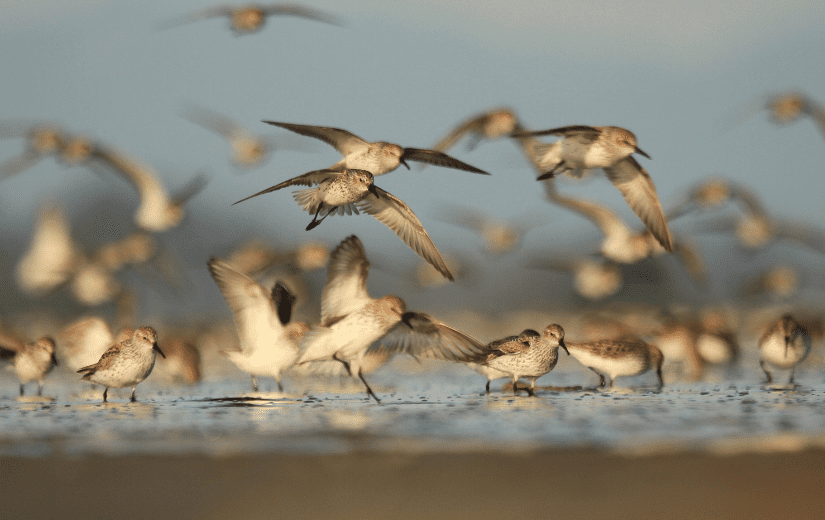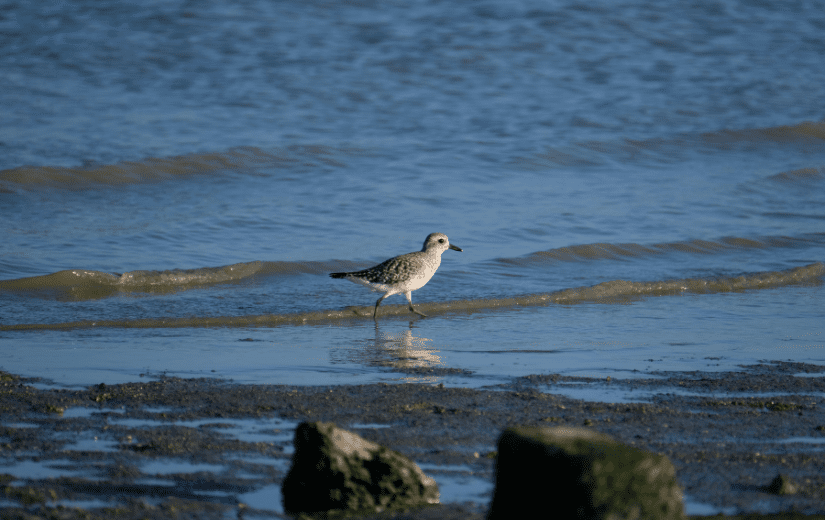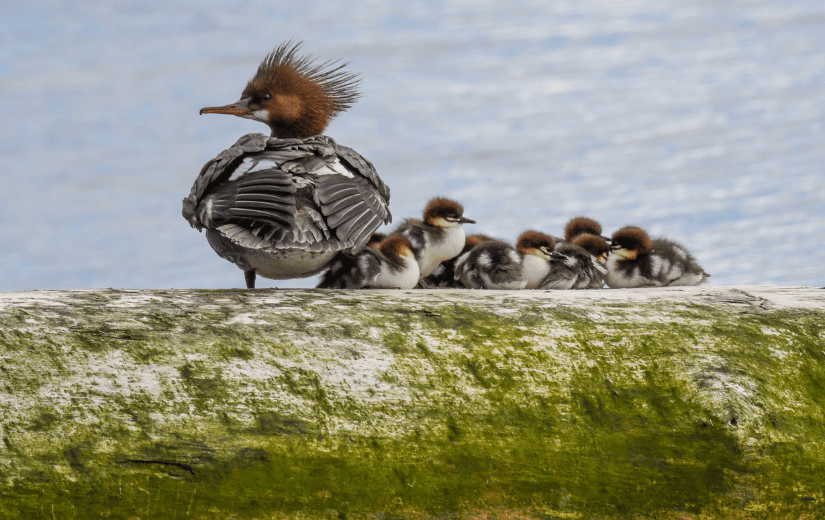It’s that time of year when migrating shorebirds and nesting birds use the Pacific coast to travel between their breeding and wintering grounds. These long journeys leave little room for setbacks and delays from human disturbance can impact their survival and breeding success.
Pet guardians can make a meaningful difference for these birds by being mindful in natural areas. Dogs running off-leash on beaches and tidal flats often rouse flocks of shorebirds, who then swirl in circles looking for another quiet place to land. While the birds may not be hurt directly, they can still be negatively impacted. If they aren’t able to feed and build their energy reserves to fly to the next staging ground in their migration, they could perish in flight.

Researchers from Simon Fraser University have discovered that approximately half of a shorebird’s diet is made up of a paper-thin slime of biofilm found on tidal mudflats. Migrating birds such as sandpipers (like the ones pictured above), red-necked stints and dunlins suck up this energy-rich slurry. With such a short timeframe to stay ahead of the weather, shorebirds must spend as much time as possible on the ground eating, so they have the energy to fly hundreds of kilometres to their next stop. With each disturbance, time and energy are wasted.

Shorebirds aren’t the only ones to look out for! Thousands of waterfowl build nests amongst the grasses along waterways. During the month-long incubation period, female ducks and geese quietly sit on their eggs while males remain nearby to guard the nests.
If you see male ducks and geese patrolling pathways near the water from April to June, this is your signal to keep dogs out of the grassy areas along shores. Dogs often flush birds off their nests, sometimes stepping on the nests and damaging eggs. Not only does this harm the birds but under the federal Migratory Birds Convention Act it is illegal to disturb the nests of migratory birds. A summary offence for disturbing the nests of migrating birds, including waterfowl and songbirds, can be up to a $50,000 fine or up to six months in jail. With worldwide populations of shorebirds and waterfowl in decline, largely due to habitat destruction and pollution, we can do our part by keeping our companion animals away from sensitive wildlife habitats — particularly during crucial nesting and migration periods.

Similar risks exist for cats that prey on songbirds. Spring is the time when outdoor cats can do the most damage to vulnerable nestlings and fledgling baby birds. Consider keeping your cat indoors, training your cat to walk on a leash and harness, or building an outdoor enclosure or catio. And, at other times of the year when birds are not nesting, consider outfitting your cat in a Birdsbesafe collar cover or CatBib to reduce predation on adult birds. While cat predation on birds can occur in your backyard, this may be particularly critical for people living close to parks, creeks, ravines or other natural areas where songbirds nest and are most at risk. Songbird populations are also in steep decline across North America and reducing threats that we can control can make a meaningful impact.

More resources
Subscribe to WildSense Newsletter
Want to receive more stories like this, right in your inbox? Subscribe to WildSense, our bi-monthly wildlife newsletter.
The BC SPCA uses your personal information to update you on our work for animals as well as for advertising and analytics purposes. More information on uses and how to opt-out can be found in our Privacy Policy.
